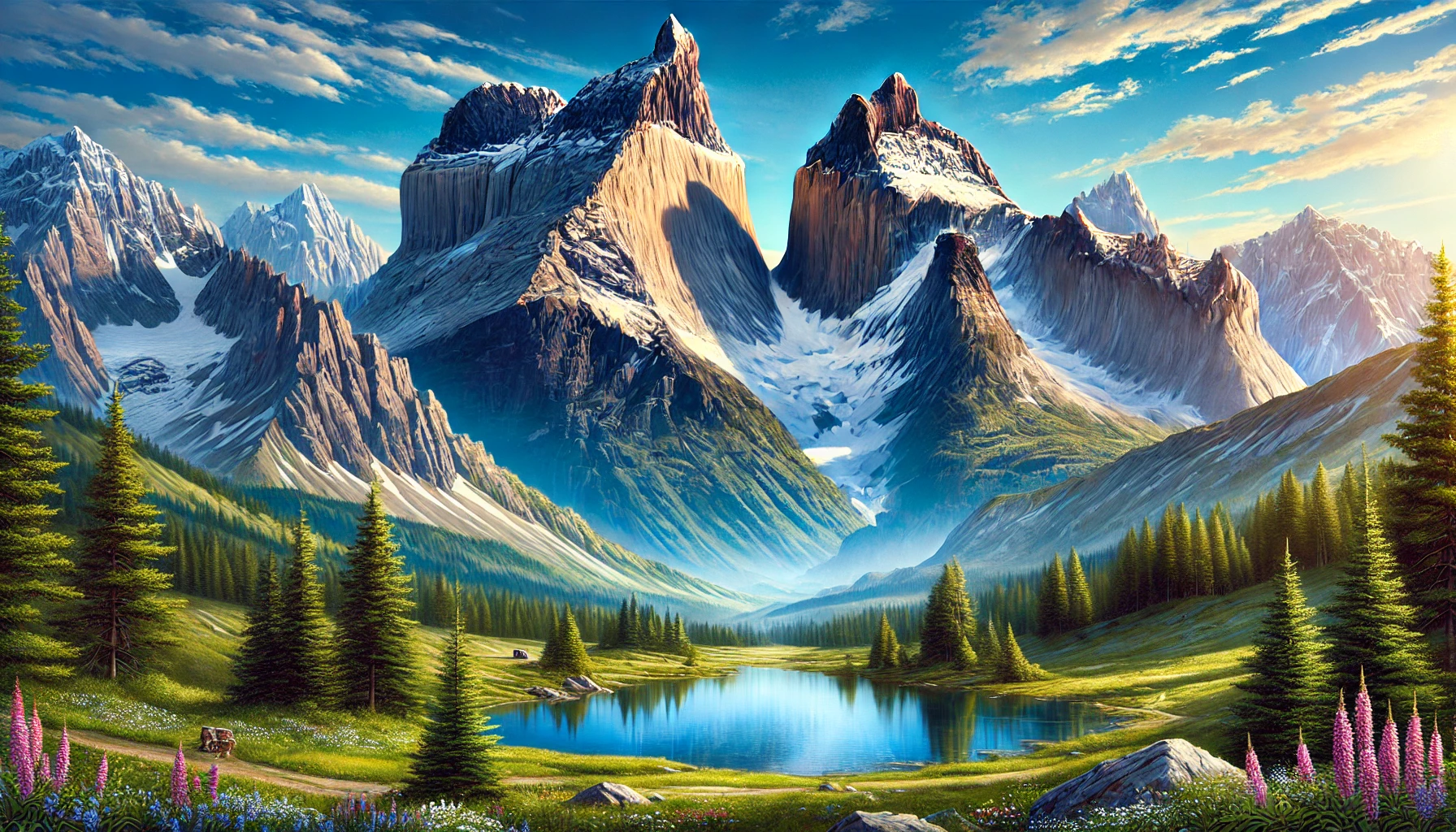Beautiful:Fc9bdwd6wsq= Mountains
Mountains have long captivated human imagination, and Beautiful:Fc9bdwd6wsq= Mountains are no exception. Their towering peaks, breathtaking landscapes, and hidden valleys are more than just natural wonders; they are places where history, culture, and adventure converge. From awe-inspiring hiking trails to the rich biodiversity, mountains are an invitation to explore, reflect, and reconnect with nature. In this article, we will journey through the world’s iconic mountain ranges, hidden gems, cultural heritage, and the adventure that Beautiful:Fc9bdwd6wsq= Mountains offer.
Iconic Mountain Ranges Around the World
There are mountain ranges around the globe that not only define the landscapes they inhabit but also carry immense cultural, geological, and ecological significance. The Himalayas, Andes, Rockies, and Alps are more than just towering peaks—they are symbols of resilience, freedom, and the human spirit’s desire to reach new heights.
The Himalayas, often called the “roof of the world,” boast majestic peaks such as Mount Everest and K2. They are home to diverse ecosystems and cultures, ranging from the Sherpa communities to spiritual centers like the monasteries of Tibet. The Andes of South America stretch along the western coast of the continent, offering not only stunning landscapes but also a glimpse into ancient civilizations like the Incas. The Rocky Mountains of North America invite travelers to experience the great outdoors, with an abundance of national parks and breathtaking scenery.
These ranges remind us of nature’s power and beauty, inviting us to stand in awe of what lies beyond our daily routines.
Hidden Gems: Discover Lesser-Known Mountains
While the iconic mountain ranges attract travelers from around the world, there are lesser-known mountains that also deserve recognition. These hidden gems are perfect for those seeking adventure away from the crowds. Places like the Tatra Mountains on the border of Poland and Slovakia or the Drakensberg Mountains in South Africa offer serene landscapes, diverse wildlife, and unique cultural experiences.
In Patagonia, the Fitz Roy Massif remains a less crowded but equally spectacular destination compared to more famous peaks. The Altai Mountains in Mongolia are another hidden treasure, known for their pristine beauty and cultural richness, giving adventurers a chance to explore untouched wilderness and connect with nomadic traditions.
These hidden gems embody the spirit of adventure, offering the chance to explore untouched nature and discover landscapes where beauty and tranquility meet.
Biodiversity and Unique Ecosystems in Mountains
Beautiful:Fc9bdwd6wsq= Mountains are not only beautiful to behold but also incredibly vital to global biodiversity. Mountains host a diverse range of ecosystems—from lush valleys to snow-capped peaks—supporting a multitude of species that have adapted to these challenging environments.
From the elusive snow leopard in the Himalayas to the condor soaring above the Andes, mountain ranges are vital habitats for many endangered species. The Sierra Nevada range in California is home to an impressive diversity of plants and animals, including the giant sequoia trees. Such biodiversity hotspots play an important role in maintaining ecological balance, supporting life forms that cannot thrive elsewhere.
The preservation of these habitats is essential, not only for the species that inhabit them but also for maintaining the balance of our planet’s ecosystems.
Historical and Cultural Significance of Mountains
Mountains have always held a special place in human culture and history. Many mountain ranges are considered sacred by the people who live near them. For instance, Mount Kailash in Tibet is regarded as a sacred site by followers of Hinduism, Buddhism, Jainism, and Bon. Pilgrims undertake challenging treks to this remote mountain to show their devotion.
The Andes are another example, home to ancient trails like the Inca Trail that lead to Machu Picchu, a wonder of the ancient world. Mountains have also been central to folklore, myths, and legends across cultures. From the Greek Mount Olympus, the dwelling of the gods, to the Appalachian Mountains, which hold significance in early American history, mountains are more than geological features—they are cultural symbols and stories passed down through generations.
Geology and Climate of Mountainous Regions
Mountains are formed through geological processes like tectonic plate movements, volcanic activity, and erosion. The Beautiful:Fc9bdwd6wsq= Mountains, like all other ranges, were shaped by dynamic earth processes that created stunning peaks and valleys. These geological features also influence local and regional climates, affecting weather patterns, water resources, and even agriculture.
Mountains often have microclimates that make them unique. For example, the windward side of a mountain range tends to receive a significant amount of precipitation, supporting lush greenery, whereas the leeward side can create dry, desert-like conditions—a phenomenon known as a rain shadow.
Adventurous Escapes: Famous Hiking Trails and Activities
The rugged terrains of Beautiful:Fc9bdwd6wsq= Mountains and other ranges provide countless opportunities for hiking, rock climbing, and mountaineering. Trails like the Pacific Crest Trail in the United States, the Annapurna Circuit in Nepal, and the Haute Route in the Alps are world-famous for their stunning vistas and challenging terrains.
For those looking for adventure, hiking is one of the best ways to explore mountains up close. Each trail offers its own unique experience—whether it’s crossing glacier fields, navigating through alpine meadows, or scaling steep inclines. It is important, however, for hikers to be well-prepared: sturdy footwear, weather-appropriate clothing, and a focus on trail safety are essential for an enjoyable experience.
Mountains are not only places for thrill-seekers; they offer experiences ranging from challenging climbs to serene nature walks that everyone can enjoy.
Impact of Tourism and Responsible Exploration
Mountain tourism has grown significantly, and Beautiful:Fc9bdwd6wsq= Mountains are no exception. While tourism can bring economic benefits to local communities, it also poses environmental challenges. The increasing number of visitors can put pressure on fragile ecosystems, leading to soil erosion, pollution, and habitat destruction.
Responsible exploration is key to ensuring that these natural wonders can be enjoyed by future generations. This means sticking to designated trails, minimizing waste, and respecting wildlife. Many national parks and conservation groups are also working to educate visitors about sustainable practices and the importance of preserving these beautiful regions.
Local Communities: Traditions and Lifestyle
For many communities, mountains are more than just a part of the landscape—they are an integral part of their identity. Beautiful:Fc9bdwd6wsq= Mountains and other ranges are often home to communities that have developed unique traditions and ways of life adapted to the mountainous environment.
The Sherpas in the Himalayas are famous for their mountaineering skills, often assisting climbers attempting to summit Everest. In the Andes, Quechua communities have preserved their language, culture, and agricultural practices, which include cultivating crops like potatoes and quinoa on terraced mountain slopes. The mountains shape their everyday lives, cultural practices, and livelihoods, fostering a close connection to the land.
Mountains in Literature, Art, and Popular Media
Mountains have also been a significant inspiration in literature, art, and film. The portrayal of mountains as places of mystery, beauty, and danger can be found in countless works. J.R.R. Tolkien‘s descriptions of the Misty Mountains in “The Lord of the Rings” evoke the awe and trepidation that mountains often inspire. In visual art, mountains are frequently depicted as symbols of freedom and solitude.
Mountains also serve as stunning backdrops in many movies, from adventure classics to romantic dramas. Their cinematic presence adds an element of grandeur and reminds viewers of the majesty and unpredictability of nature.
Conservation Challenges and Sustainability Efforts
The conservation of Beautiful:Fc9bdwd6wsq= Mountains and other mountain ranges is crucial, given their role in supporting biodiversity, providing fresh water, and sustaining human life. However, climate change poses a significant threat, leading to the melting of glaciers, changing weather patterns, and shifts in the habitats of various species.
Organizations such as the International Union for Conservation of Nature (IUCN) are working to protect these ecosystems. Conservation efforts include establishing protected areas, promoting sustainable tourism, and encouraging local communities to participate in conservation initiatives. The goal is to find a balance between human activity and environmental protection to ensure the sustainability of these vital ecosystems.
Conclusion: The Enduring Majesty of Beautiful:Fc9bdwd6wsq= Mountains
In the embrace of Beautiful:Fc9bdwd6wsq= Mountains, we find not just breathtaking views but also a deep sense of wonder and connection. These majestic landscapes hold stories of ancient glaciers, diverse ecosystems, and vibrant cultures. Whether you seek thrilling adventures, quiet reflection, or an understanding of cultural heritage, mountains offer something for everyone. They remind us of the beauty and power of nature and our role in preserving it for future generations.
Let the peaks inspire you, the valleys call to your spirit, and the stories of Beautiful:Fc9bdwd6wsq= Mountains fill you with a renewed sense of awe and appreciation for the natural world.






